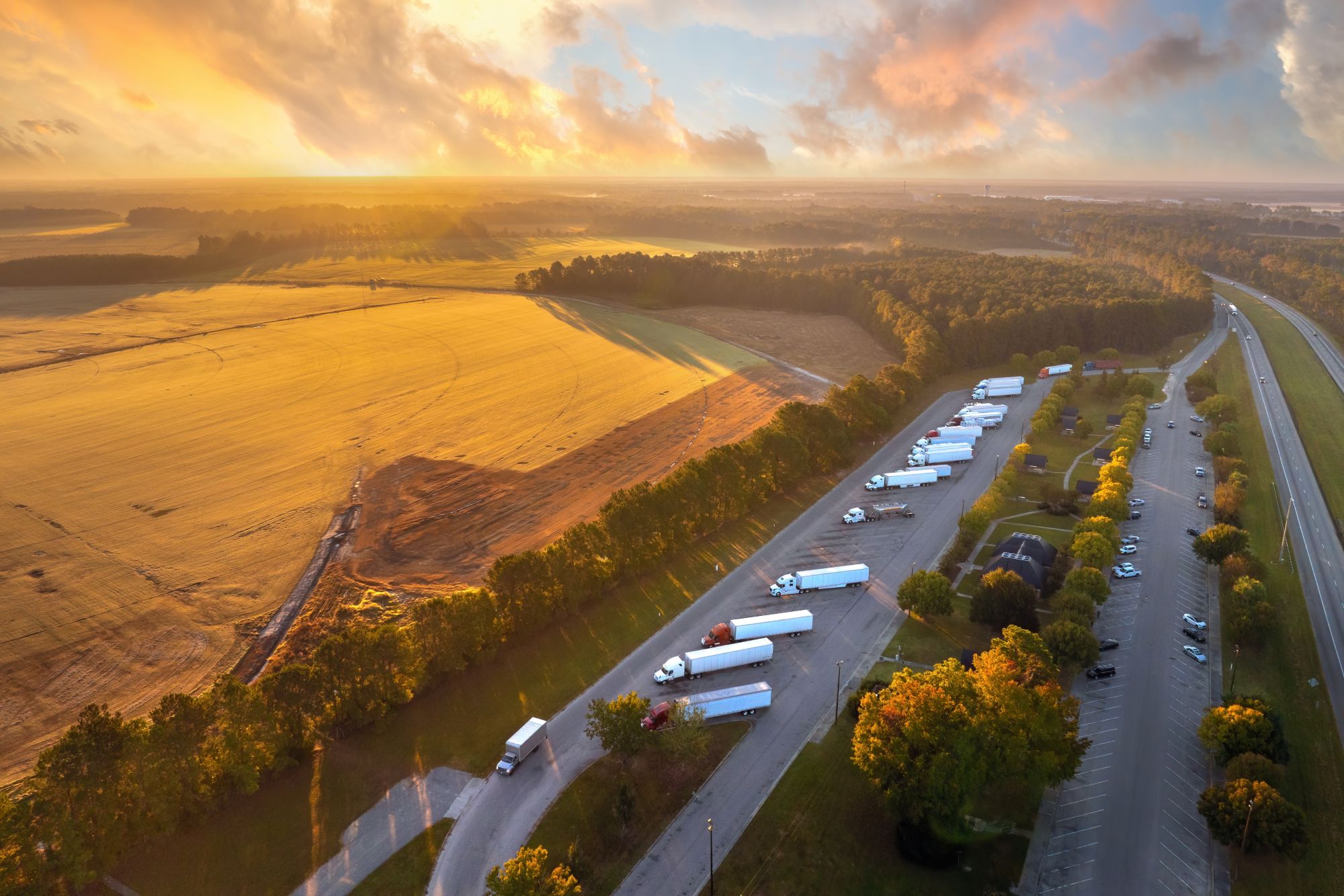
Guest
How to become a lorry driver
Created: 26/09/2025
•
Updated: 26/09/2025
Across Europe, demand for professional lorry drivers has never been higher. In the UK, the Road Haulage Association estimates that 200,000 new lorry drivers will be needed in the next five years to keep supply chains running. And the situation is the same across most of Europe. According to International Road Transport Union data, there were 426,000 unfilled driver positions across Europe in 2024.
But this creates an opportunity. As we previously explored, the haulage industry offers the prospect of steady work for school leavers considering alternatives to university and adults looking to retrain. Becoming a lorry driver is a pathway to secure earnings and a structured career.
The question many ask is: how to become a lorry driver? The answer depends not just on training and licences, but on understanding what it means to join a profession that keeps Europe’s economy moving.
Who can become a lorry driver?
One of the main attractions of a driving career is its accessibility. You don’t need a university degree or years of specialist training to start; a standard car licence (Category B) is all that’s required before working towards professional qualifications.
The minimum age for training is 18 in both the UK and across the EU, which means school leavers can move directly from a car licence to professional HGV driver training. That said, many firms prefer international drivers to be at least 21, given the extra responsibility that comes with long-distance haulage.
Medical fitness is also important. Every applicant has to pass a medical before they can hold an HGV licence. In the UK, this involves a range of tests, including eyesight checks, blood pressure readings and screening for conditions such as epilepsy, heart disease or sleep apnoea.
European nations apply the same EU-wide medical standards, with regular renewals ensuring drivers remain healthy throughout their careers.
How much does a lorry driver earn?
For many people considering the move into professional driving, a key concern is: how much do lorry drivers earn?
The answer varies depending on location, experience and the type of work undertaken, but across Europe, the profession offers competitive pay compared to other entry-level jobs.
● A new driver in the UK will usually start on around £27,000 a year. Those who move into long-haul work, especially on international routes, can see their pay rise towards £45,000 – sometimes more if they’re hauling specialist or hazardous loads. those handling specialist loads, hazardous goods or operating across borders.
● In Spain, salaries tend to be lower than in the UK, typically around €36,600, although large logistics firms in major cities may offer more.
● Poland has seen strong demand for drivers in recent years, but wages remain modest, averaging around 92,400 PLN (approximately €21,690).
● Romania sits at the lower end of the scale, with drivers generally earning 80,550 RON (€16,000), although international haulage contracts can significantly boost take-home pay.
Of course, salary isn’t the whole story. Many companies offer overtime pay, meal allowances or bonuses for hitting delivery targets. And with demand for drivers showing no sign of slowing, the job also brings a level of security that few other entry-level careers can match.
Which lorry driver licence do I need?
Before you can get behind the wheel of a lorry, you’ll need the right licence. In the UK, this means progressing beyond a standard car licence to what’s officially known as a Large Goods Vehicle (LGV) or Heavy Goods Vehicle (HGV) licence. The terms are often used interchangeably, but both cover the same categories of professional driving.
Some people begin with a Category C1 licence, which covers medium-sized vehicles between 3.5 and 7.5 tonnes – often used for smaller delivery trucks.
However, most aspiring lorry drivers go straight to the Category C licence, sometimes called a Class 2 HGV licence. This allows you to drive rigid vehicles over 7.5 tonnes. For those who want to progress to articulated lorries – the larger vehicles commonly used on long-distance and international routes – the Category CE licence (Class 1) is required.
Alongside these qualifications sits the Driver Certificate of Professional Competence (CPC), a legal requirement across both the UK and EU. This certificate involves a mix of initial training and periodic refreshers, designed to keep drivers up to date on safety, regulation and road skills.
This system mirrors the EU-wide licensing framework. The main differences between countries lie in the training providers, the costs involved and, in some places, the availability of test slots.

How to get your HGV licence
Securing your HGV licence is the first step into professional driving. In the UK, you can start the process once you hold a standard Category B car licence. From there, you apply for a provisional lorry licence, which allows you to begin training in large goods vehicles.
The training itself combines theory and practical elements: classroom sessions on road safety and regulations, followed by supervised driving in heavy vehicles. Candidates must also complete modules for the Driver Certificate of Professional Competence (CPC), which ensures that drivers are equipped not just to operate vehicles safely but also to manage the day-to-day demands of haulage.
How much does it cost to become a lorry driver?
One of the most common questions for anyone considering this career is how much lorry driver training costs. In the UK, prices vary depending on the provider, location and whether you’re training for a Category C or the more advanced Category CE licence. On average, new drivers can expect to spend between £2,000 and £3,500 to cover medical checks, provisional licence fees, theory tests, practical training, CPC modules and the final driving test. Some companies, particularly larger logistics firms, offer schemes to subsidise or fully fund training in exchange for a work commitment, making the route more accessible.
Elsewhere in Europe, the numbers aren’t too different. In Spain, training generally costs between €2,000 and €3,000 for full training and certification. In Poland, the figure is lower, averaging €1,500 to €2,500. Romania has some of the lowest training costs in Europe, with many candidates paying around €1,000 to €1,800 to qualify, although entry-level wages tend to reflect this lower barrier to entry.
How long does it take to become a lorry driver?
The time it takes to qualify as a lorry driver depends on where you train, the type of licence you’re aiming for, and how quickly you can secure test dates. In the UK, most people complete their training and pass their tests within two to four months. Some intensive courses compress the process into a matter of weeks, though many drivers find that spacing out lessons helps them absorb the skills more effectively.
In Spain and Poland, the process is similar, although longer waiting lists for exam slots can extend the timeline. In Poland, high demand for professional drivers has created bottlenecks at training centres, meaning some candidates wait several months before sitting their practical test. Romania has one of the fastest pathways, with training and testing often completed within eight to twelve weeks.
And the learning doesn’t stop once you’ve got your licence. Every professional driver must complete 35 hours of CPC training every five years, keeping their skills up to date and making sure they’re ready for the latest regulations and safety standards.
How long can a lorry driver drive for?
Once you’re qualified, the job comes with strict limits on how long you can spend behind the wheel. These limits are designed to protect both drivers and other road users by reducing fatigue.
Across the UK and EU, the rules are the same. Drivers can spend a maximum of nine hours behind the wheel each day, which can be extended to ten hours twice a week. Weekly limits cap driving at 56 hours, with no more than 90 hours over two consecutive weeks.
A driver must also take a break of at least 45 minutes after 4.5 hours of driving. They are also entitled to daily and weekly rest periods to recover before returning to work.
These rules are closely monitored, with tachographs fitted in vehicles to record hours and ensure compliance. For those working long-distance routes, such as Spanish drivers covering the Iberian Peninsula or Polish hauliers moving goods across the EU’s eastern borders, these limits shape the rhythm of the job. They determine when and where drivers stop, making access to safe and secure rest areas a vital part of the working day.
Getting started as a lorry driver
Becoming a lorry driver isn’t just about passing tests. It’s about stepping into a role that carries real responsibility, but also brings long-term opportunity. With the right licence, the right training and the determination to take on life on the road, it’s a career that can provide both stability and progression.
At SNAP, we know what those journeys look like. That’s why we work with fleets and drivers across Europe to make them safer, simpler and more comfortable – from secure parking and better welfare facilities to smart digital tools that save time and stress. Whether you’re just starting out or you’ve been driving for years, we’re here to back you every mile of the way.
Download the intruck app today to find trusted parking, facilities and services, wherever your route takes you.



